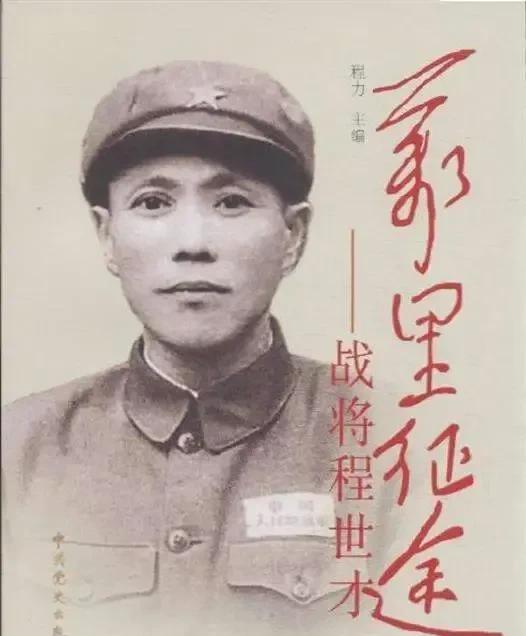In the history of the Red Army, the encounter of the Western Route Army is undoubtedly tragic. Even now it has been more than eighty years since the Western Route Army's Western Expedition, but the history of the Western Route Army will make people feel unbearable to read it after reading it.

1. Introduction to the Western Route Army
In October 1936, the three main forces of the Red Army completed the division. However, this is the end of the Long March, and it is also the beginning of a new journey. Because after the Red Army arrived in northern Shaanxi, it also needed to consider building new base areas to carry out anti-Japanese and national salvation activities -- if nothing else, the products in northern Shaanxi were too scarce to support too many people who had left work. Therefore, after some research, the relevant principals believed that some soldiers should be selected from the Red Army to form the Western Route Army, pass through Gansu to the western region, and open up international channels. In this way, some trade with the Soviet Union and Outer Mongolia could be carried out, thus alleviating the financial pressure of the Red Army.
The Western Route Army had more than 20,000 soldiers and consisted of three armies. Among them, they include: the Fifth Army, the commander of which is Dong Zhentang; the Ninth Army, whose commander is Sun Yuqing; and the Commander of the Thirty Army, which is Cheng Shicai.
At that time, the Gansu warlord Ma Bufang had dispatched more than 20,000 cavalry in the course of an attack on the Fifth Army, so it can be seen that although the Western Route Army is composed of three armies, its strength does not occupy any advantage over Ma Bufang. But in fact, this was also a helpless thing - at that time, the Red Army had just experienced the Long March, and it was actually a great deal of strength to be able to allocate so many troops.
The tragedy of the Western Route Army
The Red Army was good at mountain warfare. Moreover, the premise of mountain warfare requires familiarity with geographical conditions, and of course the mass base is also very important. While the Western Route Army engaged Ma Bufang's troops in Gansu, none of these three advantages were occupied:
First of all, there are many Gobi Deserts in Gansu, and the Red Army's advantages in mountain warfare cannot be brought into play; on the contrary, it is the most suitable cavalry for the Gobi Desert, and Ma Bufang has tens of thousands. Moreover, under the circumstances at that time, unless the infantry was armed with Maxim heavy machine guns, it was difficult to stabilize the battle line in the face of several rounds of cavalry charges. But the main armament of the Red Army was all rifles. This means that in terms of equipment, Ma Bufang has an absolute advantage.
In addition, the Western Route Army is not familiar with Gansu. It is conceivable that under such circumstances, what kind of end will the Western Route Army encounter?
In this way, although the soldiers of the Western Route Army fought bloodily, in the end, most of the soldiers still died heroically. Even among the three commanders of the Western Route Army, only Cheng Shicai survived, and in the end, after nine deaths and a lifetime of hardship, he was able to return to Yan'an.
However, although the Western Route Army was defeated in the northwest. However, the soldiers of the Western Route Army held weapons that were not dominant, preferring to die unyieldingly, which made Ma Bufang's troops feel uneasy for many years.
3. Cheng Shicai's experience
Cheng Shicai's troops broke through through a bloody battle and made contact with Yan'an via radio. According to the actual situation at that time, the Yan'an side instructed Cheng Shicai: It is possible to break through in the direction of the western region. In this way, Cheng Shicai took the Western Route Army, spent a lot of energy, and after many difficulties and obstacles, he was able to reach the western region and get rid of Ma Bufang's pursuit.
Shortly thereafter, the Xi'an Incident broke out. After some mediation by various forces, Cheng Shicai was able to return to northern Shaanxi with the remnants of his troops. After returning to northern Shaanxi, Cheng Shicai took part in new battles.
For example, after the end of the War of Resistance Against Japanese Aggression, Cheng Shicai was sent to lead troops into the northeast to do the work of building base areas, and served as the commander of the Liaodong Military Region. In the Liaoshen Campaign, no small contribution was made.
After the founding of New China, Cheng Shicai was arranged to serve as the deputy commander of the public security army, the so-called public security army, which was quite similar in nature to the contemporary armed police, and the main job was to be responsible for public security. It should be known that in the early days of the founding of New China, the activities of the enemy and special forces were rampant, so the focus of the work at that time was to study how to smash the sabotage plots of the enemy and the special forces. After all, in peacetime, the responsibility of the public security is great. Therefore, this job is important. But Cheng Shicai completed the task well.
In 1955, Cheng Shicai was awarded the rank of lieutenant general.